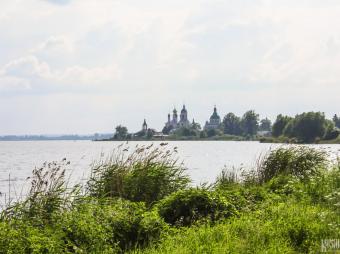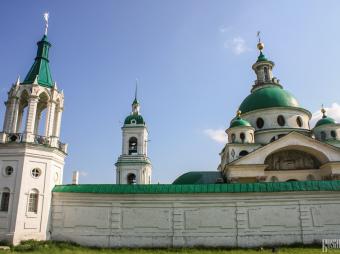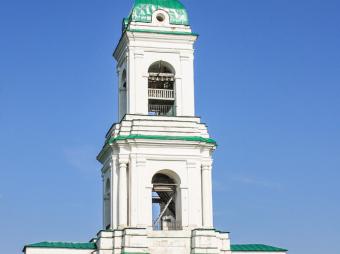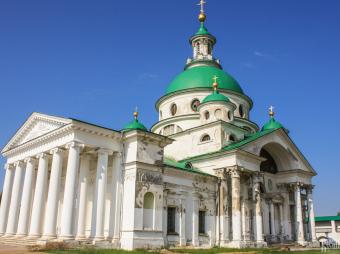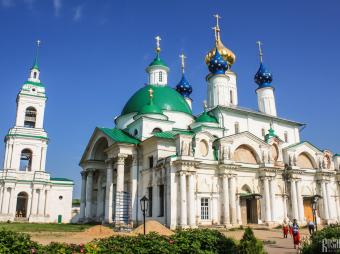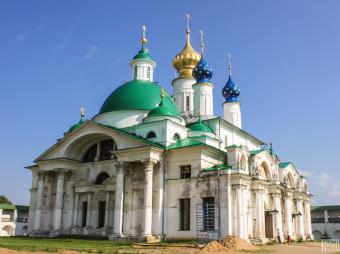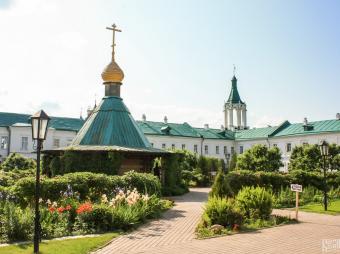West of the Historical Centre
Spaso-Yakovlevsky Monastery

The Spaso-Yakovlevsky Monastery was founded as the Zachatievsky Monastery in approximately 1390 by Bishop Jacob (Yakov) of Rostov. After his death in 1392 Bishop Jacob was interred in a wooden church here and was later canonised as St Jacob (Yakov) of Rostov. In 1408 the monastery was burned to the ground by Edigu’s Tatar army. The monastery was once again destroyed in 1609 by the Polish interventionists during the Time of Troubles. In 1765 the neighbouring Spaso-Pesotsky Monastery was dissolved and its cathedral became part of the Zachatievsky Monastery which was renamed Spaso-Yakovlevsky Monastery after the old monastery and St Jacob of Rostov.
St Demetrius of Rostov's Cathedral
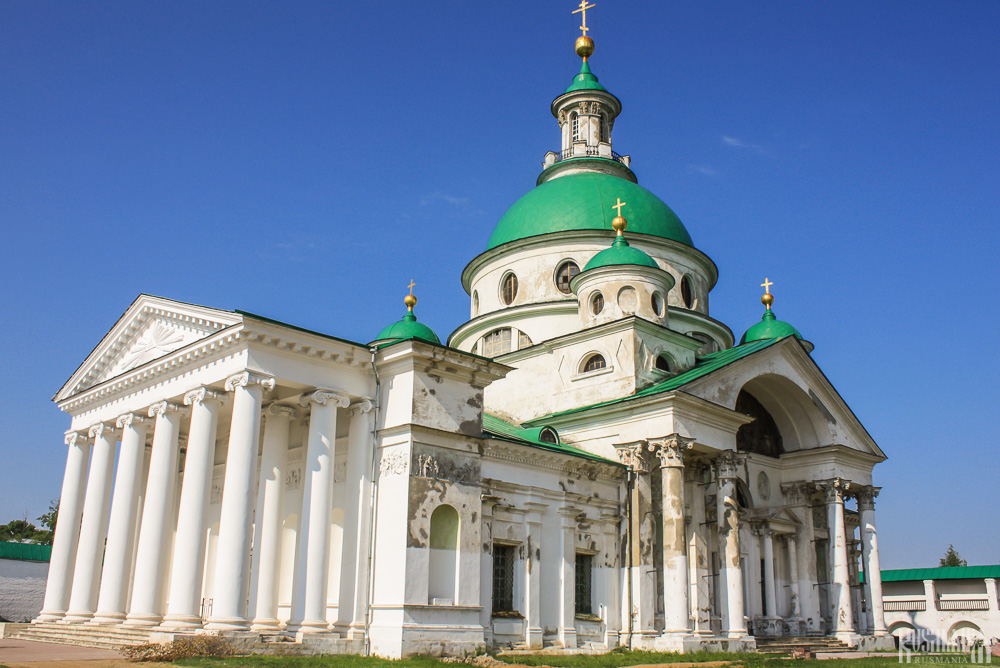
St Demetrius of Rostov's Cathedral is now the monastery's main cathedral although it is not the oldest. It was built in the classical style, complete with facades of columns and pediments and five central green domes, between 1795 and 1800. It is named after Metropolitan Demetrius (Dmitri) of Rostov, who died in Rostov in 1709 and was originally interred in the Trinity Cathedral. In 1752 it was discovered that Demetrius' remains were incorrupt and he was later canonised as St Demetrius of Rostov. St Demetrius’ tomb was moved to the new cathedral dedicated in his honour upon its completion where they remain today and are considered the monastery’s most revered relic.
Conception of Anna Church and St Jacob of Rostov's Church
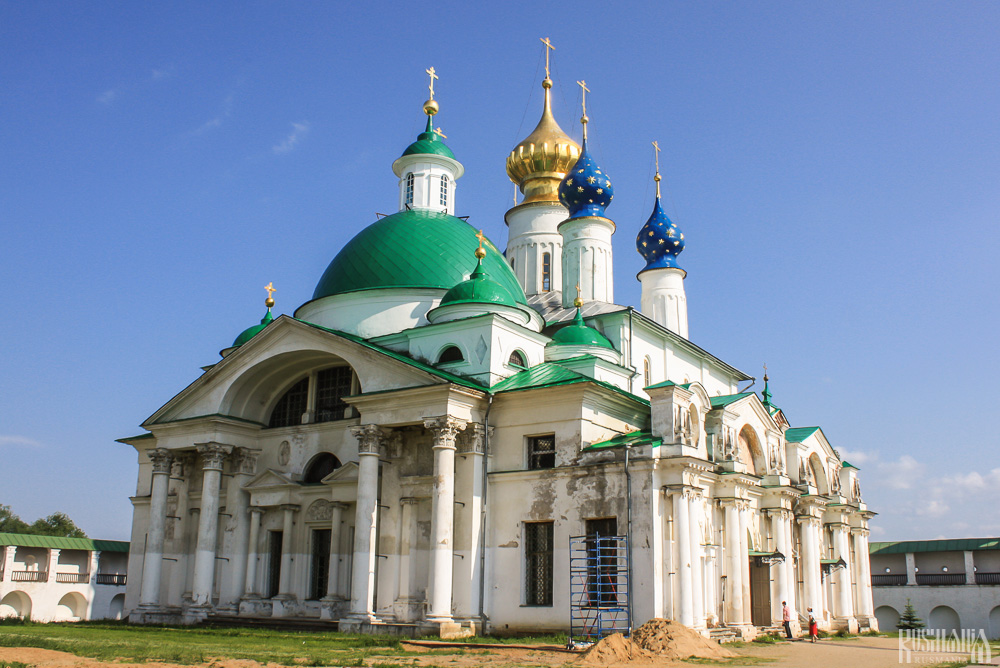
The Conception of Anna Church was originally built in 1686 as the monastery’s main cathedral dedicated to the Holy Trinity as part of Metropolitan Jonah’s building programme. It was built in the standard ancient Russian form of a four-columned building with four blue domes and a central golden dome on top. Three years later the interior was painted with frescoes by masters from Yaroslavl. In 1725 a side-chapel dedicated to the Conception of Anna Church was built onto the Trinity Cathedral. In 1754 the Trinity Cathedral was renamed the Conception of Anna Church and the side chapel was rededicated to St Jacob of Rostov which was rebuilt and extended in 1836 as St Jacob of Rostov's Church. The new church was built in the classical style, giving the complex an eclectic appearance.
Transfiguration of the Saviour Church
The Transfiguration of the Saviour Church stands outside of the monastery’s walls as originally it was built in the 17th century as the cathedral of the Spaso-Pesotsky Monastery which was founded in the 13th century by Princess Maria, the wife of Prince Vasilko of Rostov. After the Spaso-Pesotsky Monastery was dissolved in the 18th century the cathedral became part of the neighbouring Zachatievsky Monastery which then became known as the Spaso-Yakovlevsky Monastery. In Russian the church is often referred to as the Saviour on the Sand Church in memory of the former monastery which is derived from the Russian words for Saviour (Spas) and sand (pesok).
| Location | 44 Ulitsa Engelsa |
|---|---|
| Website | http://www.rostov-monastir.ru/ |

 History
History